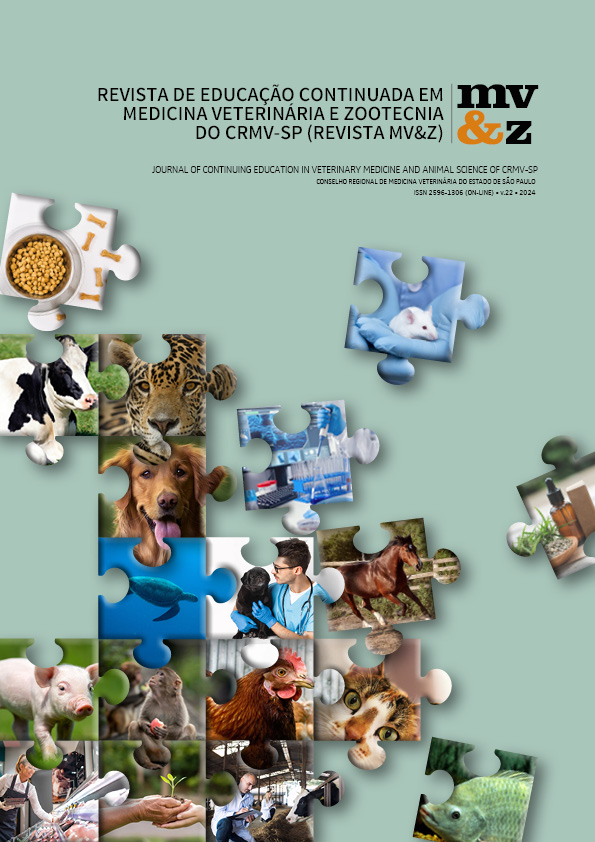Literature review: Tritrichomonas foetus in domestic cats (Felis catus)
Main Article Content
Abstract
Feline trichomoniasis is an emerging disease, whose pathogen, Tritrichomonas foetus, has been recognized in recent decades, previously being attributed to Giardia spp. due to their morphological similarities and analogous symptomatology. In felines, the main symptom is diarrhea. This condition is a result of an inflammatory process in the large intestine (colitis) and can be chronic or intermittent. Feces may have a foul odor, the presence of mucus, and occasionally, streaks of blood, as well as a greenish-yellow coloration. The animal may also manifest anorexia, vomiting, weight loss, tenesmus, and flatulence. Transmission occurs through the ingestion of trophozoites, via fecal-oral route and through grooming. Animals living in high population density environments are more likely to develop the infection compared to those not living in multi-cat environments. The accuracy of the diagnosis may be reduced due to morphological similarities between protozoa of the genera Giardia and Tritrichomonas, often resulting in underdiagnosis of this disease. The effectiveness of the treatment depends not only on the precise diagnosis of the disease but also on the pathogen’s susceptibility to drugs. Early diagnosis, appropriate treatment, and proper management practices are essential for resolving this disease. Thus, the present work aims to compile information on trichomoniasis in domestic cats.
Article Details
1. Autores mantém os direitos autorais e concedem à revista o direito de primeira publicação, com o trabalho licenciado sob a Creative Commons Atribuição-NãoComercial-SemDerivações 4.0 Internacional
2. Autores têm autorização para assumir contratos adicionais separadamente, para distribuição não-exclusica da versão do trabalho publicada nesta revista (ex.: publicar em repositório institucional ou como capítulo de livro), com reconhecimento de autoria e publicação inicial nesta revista.
3. Autores têm permissão e são estimulados a publicar e distribuir seu trabalho online (ex.: em repositórios instituicionais ou na sua página pessoal) a qualquer ponto antes ou durante o processo editorial, já que isso pode gerar alterações produtivas, bem como aumentar o impacto e a citação do trabalho publicado (Veja O Efeito do Acesso Livre);
